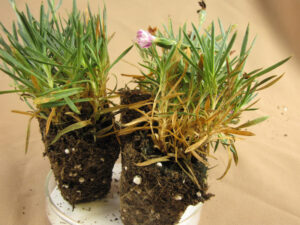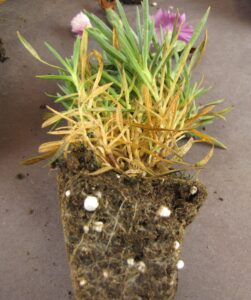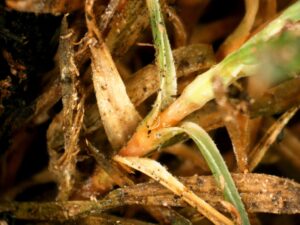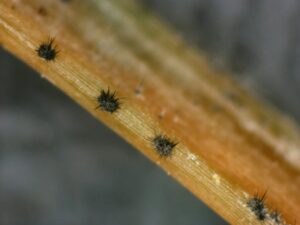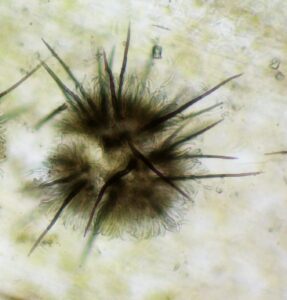Dianthus is a much-admired perennial, but occasionally it develops serious disease problems. The most dramatic of these is anthracnose, caused by the fungus Colletotrichum.
The disease may spread rapidly on greenhouse benches or in landscape plantings of susceptible dianthus varieties. The old-fashioned ‘Sweet William’ varieties seem to tolerate this disease fairly well and may only have minor damage, but several other varieties are highly susceptible. Unfortunately, variety descriptions generally don’t include disease susceptibility ratings and trial garden ratings for this plant are lacking.
- Figure 1: Dianthus plants showing browning and spotting of lower leaves caused by anthracnose.
- Figure 2: Heavily infected plants have tan to brown discoloration of lower leaves with black dots.
In landscape plantings the disease usually shows up in late spring, especially in years with frequent rainfall. Symptoms begin as irregular spotting and blighting of lower leaves, which later turn brown. Infected leaves and stems later show characteristic black spots as the fungus reproduces. All lower leaves may turn brown and, if left unchecked, the infection may move into the main stem, causing collapse of the entire plant. Spores of the fungus are spread by splashing water and by handling operations in the greenhouse or by wind and splashing water in the landscape bed.
- Figure 3: In advanced stages the fungus invades the main stem.
- Figure 4: On closer examination the black “dots” show small black needle like structures surrounded by a mass of spores. These needles are called setae and are characteristic of many of most fungi in the genus Colletotrichum.
- Figure 5: A microscopic view of a single spore mass shows the crescent moon-shaped spores which spread to other plants to cause new infections.
Non-chemical controls include removing diseased material, spacing plants to allow better drying of foliage, planting in well drained sites and mulching to reduce splashing water. Also consider irrigating using a drip system in landscape beds to reduce leaf wetness. Fungicides may be necessary in the greenhouse or with highly susceptible varieties in the landscape.
